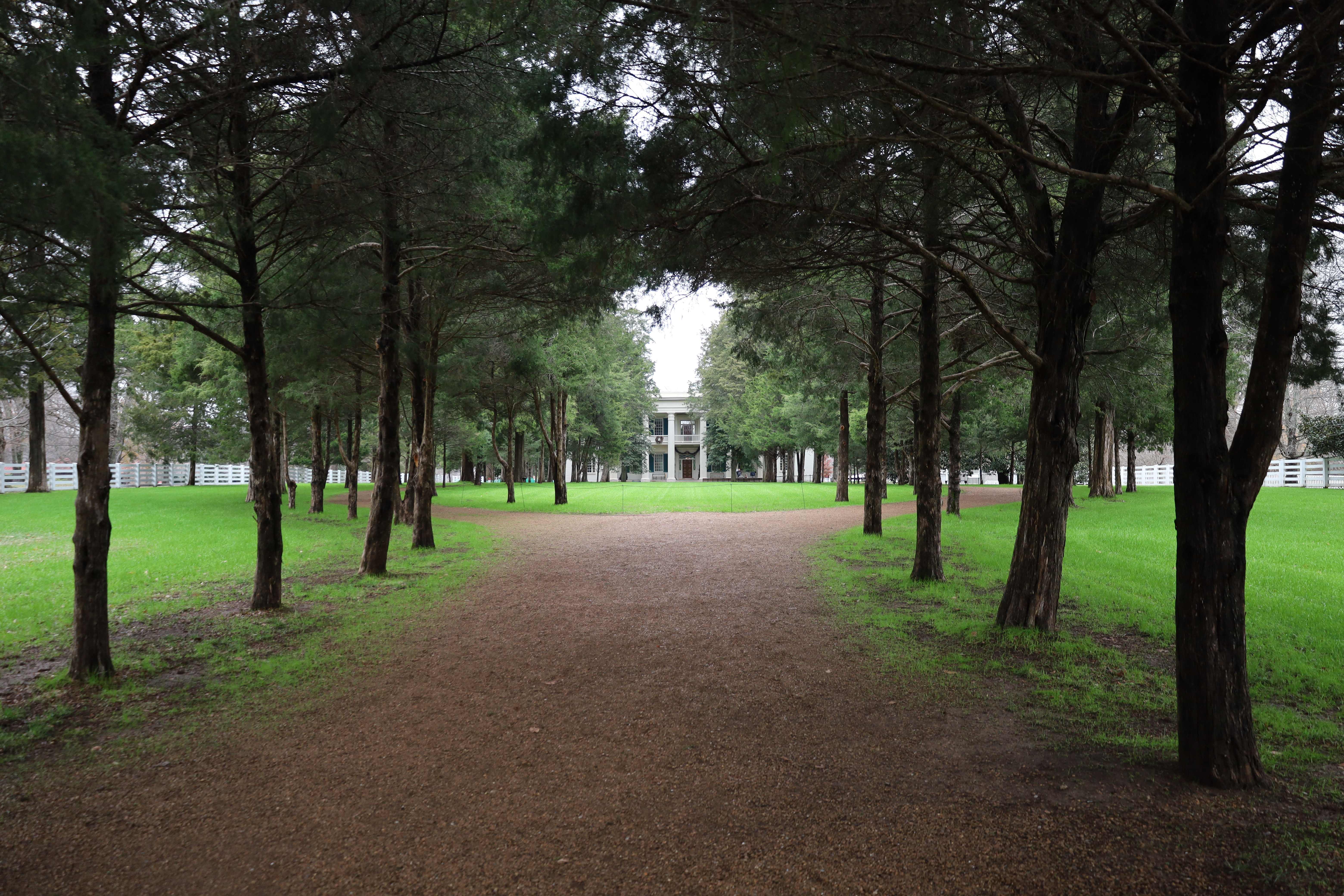Archaeology
The Ten Most Significant Science Stories of 2024
From a total solar eclipse that captivated our continent to record temperatures that scorched the planet, these were the biggest moments of the year
These 500-Year-Old Cannons May Help Unravel the Mysteries of the Coronado Expedition
The 16th-century artifacts were found during excavations in Arizona. Researchers say they may be the oldest firearms ever discovered in the continental United States
Archaeologists Say This Tiny Amulet Is the Oldest Evidence of Christianity Found North of the Alps
Discovered in central Germany, the 1,800-year-old silver artifact held a tiny scroll, which researchers have now deciphered using high-resolution scans
A Mysterious Boulder Carved to Look Like a Tortoise Shell May Offer Evidence of the Middle East's Earliest Ritual Ceremonies
The 35,000-year-old rock was found in Manot Cave, which was inhabited by both prehistoric humans and Neanderthals
Archaeologists Discover Lost Burial Site of Enslaved People on President Andrew Jackson's Tennessee Plantation
An estimated 28 probable graves were identified at the seventh American president's former property, called the Hermitage
Humans Fed Salmon to Canines 12,000 Years Ago, Study Suggests, Hinting at the Origin of Our Relationship With Dogs
New research indicates early humans and canines were interacting in the Americas 2,000 years earlier than previously thought
An Artist Noticed a Leak in His Studio. The Repairs Revealed a Mysterious Ancient Engraving Hidden Inside the Walls
Jean Charles Blais had no idea that his studio in southern France was hiding a Roman funerary inscription dating to the first or second century C.E.
These Delicate Needles Made From Animal Bones May Have Helped Prehistoric Humans Sew Warm Winter Clothing
Researchers have discovered 32 needle fragments made from the bones of smaller animals. The tiny tools may have been used to sew insulated garments during the last ice age
An Ice Age Infant's Bones Reveal Early Americans Ate Woolly Mammoths as a Protein Staple
New research examines chemical signatures to determine the diet of a prehistoric boy and his mother, suggesting the Clovis people relied on mammoths for a large portion of their menu
Hundreds of Curious Cats Contemplated Ancient Egyptian Artifacts During a Series of 'Meowseum Nights' in China
For ten nights, animal lovers brought their furry friends to "On Top of the Pyramid: The Civilization of Ancient Egypt" at the Shanghai Museum, where many examples of ancient cat imagery are on display
A Trove of Gold Coins Stolen From 300-Year-Old Florida Shipwrecks Has Been Recovered by Investigators
Contracted divers found 101 gold coins from the wreckage of a Spanish fleet in 2015, but they only reported 51 to authorities. Now, 37 of the stolen coins have been found
German Archaeologists Discovered the Iconic Bust of Nefertiti in an Ancient Egyptian Sculptor’s Studio. Find Out Why Their Discovery Is Now One of Archaeology’s Most Controversial
For over a century, ever since the bust was found on this day in 1912, the world has debated who should rightfully own this work of timeless beauty
A Little Boy Found a Strange Stone on the Beach. Archaeologists Told Him It Was a Neanderthal's Hand Ax
The artifact is now on display at a museum in southern England. Experts say the find is "so rare that most qualified archaeologists would never find one themselves"
Hidden Entrance to a Mysterious Ancient Temple Found Tucked Away in an Egyptian Cliff Face
Researchers have been carefully excavating the artifacts and decorative reliefs found at the 2,100-year-old site in the ancient city of Athribis
A New Subway System in Greece Is Decorated With the Artifacts Unearthed During Its Construction
An ancient marble thoroughfare and shards of classical pottery are on display in the city of Thessaloniki's new underground "archaeo-stations"
This Mysterious Gold Pendant Featuring a Misspelled Inscription Is an Early Medieval Imitation of a Roman Coin
A metal detectorist in England discovered the unusual piece of jewelry, which was likely made in the late fifth or early sixth century C.E.
A Mysterious Shipwreck Rests Just 20 Feet Below the Surface. It May Be Connected to Vasco da Gama's Final Voyage
Researchers think a coral-covered vessel discovered off the Kenyan coast could be the "São Jorge," a galleon that sank 500 years ago
A 65,000-Year-Old Hearth Reveals Evidence That Neanderthals Produced Tar for Stone Tools in Iberia
While Neanderthals have been found to create glue-like substances with other materials, this finding, if confirmed, would be the first sign of Neanderthals burning the rockrose plant to make tar
Archaeologists Discover Ancient Canals Used to Trap Fish in Belize 4,000 Years Ago
Pre-Maya hunter-gatherers built the system in Central America in response to a drought between 2200 and 1900 B.C.E., according to a new study
Archaeologist Discovers Two Neolithic Stone Circles in England, Supporting a 'Sacred Arc' Theory
The idea suggests prehistoric people built a ring of stone circles in modern-day Dartmoor National Park around the same time that Stonehenge was created—and the new finds have just added another piece to the puzzle
Page 1 of 97
:focal(800x602:801x603)/https://tf-cmsv2-smithsonianmag-media.s3.amazonaws.com/filer_public/0d/62/0d620de3-b26c-4118-90d6-21b460317e95/topsciencestories2024_web.jpg)
:focal(2016x1517:2017x1518)/https://tf-cmsv2-smithsonianmag-media.s3.amazonaws.com/filer_public/07/f3/07f3f351-a70a-4204-b384-5a524d059562/figure_1b_20200916_105949.jpg)
:focal(819x616:820x617)/https://tf-cmsv2-smithsonianmag-media.s3.amazonaws.com/filer_public/d4/25/d4251617-0a37-4bd5-b6bc-305f0be9ee14/469881447_997300729091906_2717609531572506917_n.jpeg)
:focal(361x271:362x272)/https://tf-cmsv2-smithsonianmag-media.s3.amazonaws.com/filer_public/4b/55/4b558f5c-2df8-4b77-8e97-bbc9dec88104/turtle-shell-rock.jpg)

:focal(570x429:571x430)/https://tf-cmsv2-smithsonianmag-media.s3.amazonaws.com/filer_public/5d/9d/5d9d3404-e5fa-4d86-b482-8489e7ae3f22/lanoe-mandible-webjpg.webp)
:focal(632x475:633x476)/https://tf-cmsv2-smithsonianmag-media.s3.amazonaws.com/filer_public/61/0d/610d215c-28a5-46b3-bae7-b23bcca3141a/jcb-with-antiquity.jpeg)
:focal(1000x752:1001x753)/https://tf-cmsv2-smithsonianmag-media.s3.amazonaws.com/filer_public/c9/b1/c9b114a3-da53-499c-bbe5-56d3f018a97a/needles.jpg)
:focal(3960x2225:3961x2226)/https://tf-cmsv2-smithsonianmag-media.s3.amazonaws.com/filer_public/df/b7/dfb73c8e-c2ac-4e79-8c35-97ce442206d4/gettyimages-1178748569.jpg)
:focal(2017x1344:2018x1345)/https://tf-cmsv2-smithsonianmag-media.s3.amazonaws.com/filer_public/2f/bf/2fbf8ef8-5f79-4d52-9dcb-7cd791ccd9dd/gettyimages-2163344230.jpg)
:focal(957x720:958x721)/https://tf-cmsv2-smithsonianmag-media.s3.amazonaws.com/filer_public/36/82/3682916b-0a96-44be-a79e-a96b30b1dc99/468491709_969277298567644_3349491973720602519_n.jpeg)
:focal(537x934:538x935)/https://tf-cmsv2-smithsonianmag-media.s3.amazonaws.com/filer_public/0c/af/0caf285f-8d54-4d08-9887-c5e134e5f630/nofretete_neues_museum.jpg)
:focal(702x528:703x529)/https://tf-cmsv2-smithsonianmag-media.s3.amazonaws.com/filer_public/28/d9/28d900ff-152e-42dc-b27d-1a10a63b6f2a/467513925_1116222060504426_8743336601052590774_n.jpeg)
:focal(495x330:496x331)/https://tf-cmsv2-smithsonianmag-media.s3.amazonaws.com/filer_public/48/5c/485c477e-afe5-4244-baa2-546229ad792b/csm_24-11-25_pylon_2024_nordturm_suedkammer_6_42689905a7.jpg)
:focal(2683x2018:2684x2019)/https://tf-cmsv2-smithsonianmag-media.s3.amazonaws.com/filer_public/01/86/0186f5a9-f76a-496d-a267-8dac7054455a/gettyimages-2186991899.jpeg)
:focal(1000x752:1001x753)/https://tf-cmsv2-smithsonianmag-media.s3.amazonaws.com/filer_public/21/7a/217a3e98-255b-4a81-8c21-e4e5701a8393/coins.jpg)
:focal(2592x1950:2593x1951)/https://tf-cmsv2-smithsonianmag-media.s3.amazonaws.com/filer_public/0e/d9/0ed913f8-3dd0-46fd-8fbb-ee94a6e76546/gopr0885.jpeg)
:focal(483x322:484x323)/https://tf-cmsv2-smithsonianmag-media.s3.amazonaws.com/filer_public/9c/d1/9cd19482-7560-489f-8b71-a913c247f47d/screen_shot_2024-11-25_at_133009.png)
:focal(2016x1517:2017x1518)/https://tf-cmsv2-smithsonianmag-media.s3.amazonaws.com/filer_public/94/48/9448072d-1956-422c-989a-d02e85515a23/1_op_46_excavation_in_the_ctws_wetlands_2019.jpg)
:focal(1287x595:1288x596)/https://tf-cmsv2-smithsonianmag-media.s3.amazonaws.com/filer_public/09/70/0970740c-71e4-4fb3-9d35-f3bbd71a78d2/standing_on_rocks.jpg)